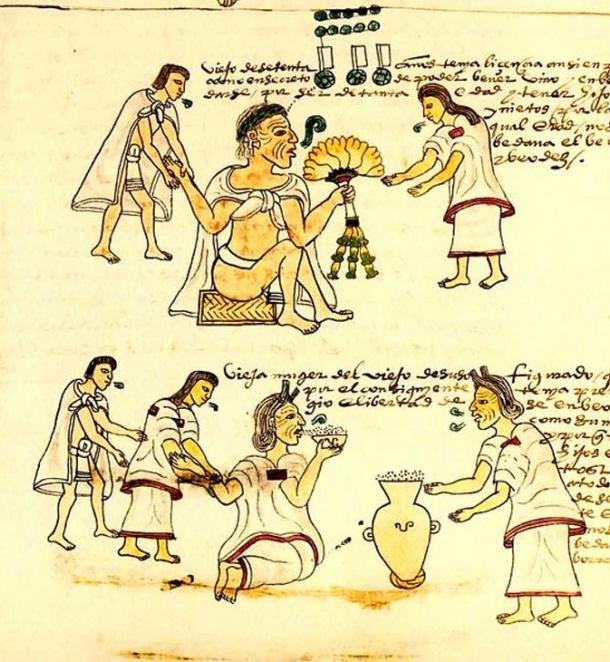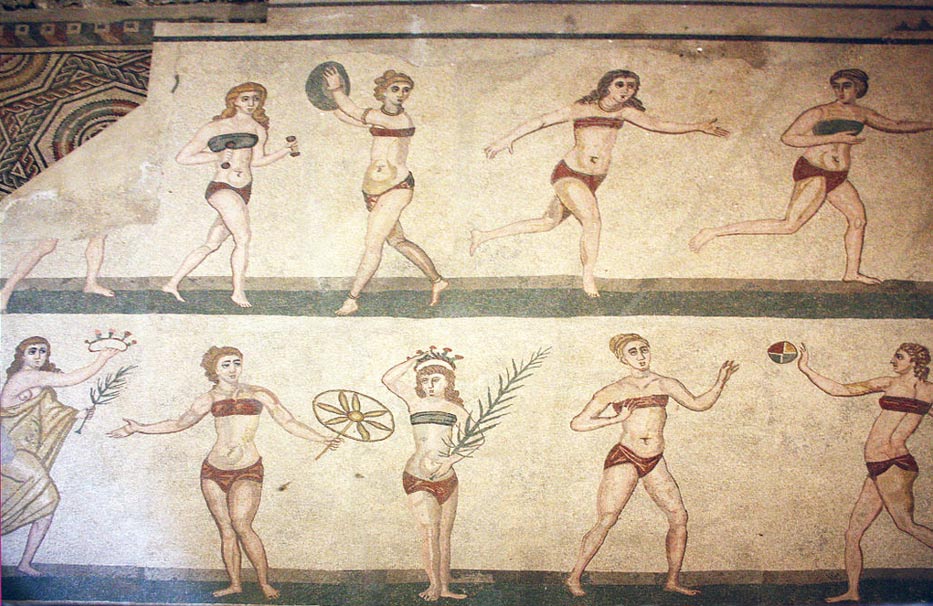http://www.ancient-origins.net/history-ancient-traditions/when-it-came-ancient-undergarments-less-was-often-more-004052
2 October, 2015 - 21:50
dhwty
When it Came to Ancient Undergarments Less Was Often More
Undergarments
are an essential part of today’s society. They can be readily purchased
from departmental stores, come in all shapes and sizes, and serve a
variety of functions. In the ancient world, however, the situation was
very different.
Apart from leather, loincloths were also made using plant fibers. Undergarments were probably more often made using these materials, though they are less likely to survive in the archaeological record. Therefore, our knowledge of such articles of clothing is dependent on the available pictorial representations or written sources in many places.

Furthermore, the hot Egyptian climate meant that wearing lots of clothing was impractical. Therefore, the loincloth was probably the clothing of choice for the average man in ancient Egypt. For women, on the other hand, the usual clothing was a simple dress known as a kalasiris. It is unclear if ancient Egyptian women wore undergarments, but considering the climate, it is unlikely that they did so.


Nevertheless, the subligaculum is believed to have not been a standard article of Roman clothing, as it was used primarily by people, such as athletes and slaves, who might be wearing too little for Roman standards of modesty.

In ancient times, undergarments were simpler and less elaborate than modern day choices. They were however, also relatively expensive and not everyone chose to (or could afford to) wear them. Thus the use of undergarments was much less common than it is today.
Featured image: Mosaic of the ‘bikini girls’ from the Villa Romana del Casale, Piazza Armerina, Sicily. (Wikimedia Commons)
By Ḏḥwty
Loincloths: Underwear or Outerwear?
To begin with, undergarments were not exactly a standard type of clothing. The loincloth is perhaps the most basic type of undergarment available, and remnants of leather loincloths that are 7000 years old have been found. In colder climates, the loincloth would be covered by outer garments, thus making it an undergarment. In warmer climates, however, the loincloth was worn alone, and was perhaps, technically speaking, not an undergarment.Apart from leather, loincloths were also made using plant fibers. Undergarments were probably more often made using these materials, though they are less likely to survive in the archaeological record. Therefore, our knowledge of such articles of clothing is dependent on the available pictorial representations or written sources in many places.

An illustration from the Codex Mendoza showing
elderly Aztecs smoking and drinking. The Aztecs wore loincloths with and
without outer garments. (Wikimedia Commons)
Nevertheless, some undergarments of this type have survived over
time. In the tomb of the Egyptian pharaoh, Tutankhamun, various articles
of clothing were found. These included tunics, shirts, ‘kilts’, socks,
and a large supply of undergarments in the form of triangular loincloths
made of linen. For the average ancient Egyptian, however, clothes were
expensive.Furthermore, the hot Egyptian climate meant that wearing lots of clothing was impractical. Therefore, the loincloth was probably the clothing of choice for the average man in ancient Egypt. For women, on the other hand, the usual clothing was a simple dress known as a kalasiris. It is unclear if ancient Egyptian women wore undergarments, but considering the climate, it is unlikely that they did so.

Queen Bint-Anath and her daughter with a god and
goddess as depicted in her tomb in the Valley of the Queens, Egypt.
Bint-Anath and her daughter are both wearing kalasiris. (Wikimedia Commons)
Ancient Bras
The first evidence of women’s undergarments is said to have come from the Minoan civilization on the island of Crete. It has been claimed that in Minoan art, women are depicted as wearing a band of cloth to support their breasts. This article of clothing is said to be called an apodesmos, which was typically a woolen undergarment that bore a basic resemblance to the design of modern bras. The apodesmos was wrapped in front of the chest, and fastened with pins in the back. The reason(s) behind the use of the apodesmos by Minoan women, however, is unclear. This practice may be considered as somewhat odd, as it is believed that women in the rest of the Greek world did not use undergarments.
Minoan snake goddess or priestess wearing an
apodesmos. It has been suggested the reasoning for an apodesmos was to
enhance the breasts (and therefore fertility). (Wikimedia Commons)
A bra-like garment was also used by women of ancient Rome, as
depicted on a mosaic from the Villa Romana del Casale in Piazza
Armerina, Sicily. In this mosaic, the women are shown exercising. One
woman, for instance, is using hand weights, whilst another woman is
throwing a ball to a partner. The sports attire of these women may be
described as ‘bikini-like’. The top is a band called a strophium, known also as a fascia, fasciola, taenia or mamillare.
This band was likely to have been a long piece of cotton or linen cloth
wrapped around the chest. The purpose of this piece of clothing was to
hold the breasts, and perhaps to compress them as well. It has been
claimed that in ancient Rome, women with large breasts were considered
unattractive. Thus, in everyday life, the strophium was a normal, though optional piece of women’s undergarment.- Archaeologists find oldest known trousers in the world
- Archaeologists unearth spectacular textiles in Ming Dynasty Tomb
- First hemp-weaved fabric in the World found wrapped around baby in 9,000-year-old house
- Weaving the World of Ancient Mayan Women
Bare-bottomed or Subligaculum-wearing Ancients
Underwear bottoms, on the other hand, were not so commonly used in everyday life. This was a loincloth-like piece of clothing known as the subligar. When used by male athletes, it would have been called a subligaculum. These articles of clothing were believed to have been made of linen, the finest quality of which being imported from Spain, Syria and Egypt.Nevertheless, the subligaculum is believed to have not been a standard article of Roman clothing, as it was used primarily by people, such as athletes and slaves, who might be wearing too little for Roman standards of modesty.

Gladiators wearing different styles of subligaculum engaging in battle. (Wikimedia Commons)
Nevertheless, there were others who wore the subligaculum as an undergarment. Male members of the Cethegi family, for instance, wore their togas over their subligaculum during the Republican period, perhaps to imply that they were the defenders of old-fashioned simplicity.In ancient times, undergarments were simpler and less elaborate than modern day choices. They were however, also relatively expensive and not everyone chose to (or could afford to) wear them. Thus the use of undergarments was much less common than it is today.
Featured image: Mosaic of the ‘bikini girls’ from the Villa Romana del Casale, Piazza Armerina, Sicily. (Wikimedia Commons)
By Ḏḥwty

No comments:
Post a Comment